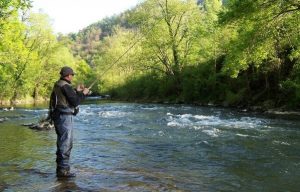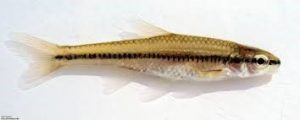2019-Oct-28
New Regulations are Coming on the Use and Selling of Live Bait in Ontario
GBA has made a submission to the Ontario Ministry of Natural Resources and Forestry (MNRF) on this important matter, primarily to strengthen the provisions regarding the avoidance of invasive species and diseases being transferred between, or introduced to, water bodies, as a result of bait practises. You can find information and a summary of the issues, including how to submit your comments, here: GBA Submission on Bait Regulations Oct 29 2019
Most anglers choose to use live bait as an alternative to artificial bait and tied flies. This stems from an historical fishing tradition of anglers having success catching fish on live minnows, crayfish, frogs and leeches. Yet, these anglers or boaters may be spreading invasive species into lakes and rivers unknowingly by using illegal baitfish species, or by emptying their bait buckets back into the water or river, thereby potentially jeopardizing the water quality and future fishing.

The live bait industry supports over one million recreational anglers and has an economic value in Ontario of over $20 million, supporting many jobs. It is therefore significant for both anglers and the businesses supplying and selling the bait.
Given the importance of this industry to recreational fishing, and recognizing the potential risks of invasive species and diseases being introduced to, or transferred between, water bodies, the MNRF has released a draft report this fall entitled: Ontario’s Sustainable Bait Management Strategy. The risks to lakes, streams and rivers include:
- Introduction of illegal baitfish;
- Introduction or transfer of invasive species, such as Eurasian milfoil; and
- The spread of infective diseases, such as of viral hemorrhagic septicemia (VHS).
The province proposes recommendations that address concerns of anglers, Indigenous communities and industry stakeholders, on:
- reducing the complexity of regulations;
- increasing business certainty for the bait industry; and
- minimizing the ecological risks associated with the sale, movement, use and harvest of baitfish and leeches.
For the Georgian Bay and Lake Huron angler, your list of permitted baitfish will drop from the current 48 to 34 species that anglers and commercial operators typically use and sell – see Ontario Fishing Regulations Summary at https://www.ontario.ca/document/ontario-fishing-regulations-summary. Many have argued, including the Georgian Bay Association, that this number should be further reduced to avoid the possibility of confusing legal and illegal species of baitfish, and that there should be a requirement to only use native species – in other words, strive for the cleanest source of bait possible.
 Georgian Bay and Lake Huron anglers, under Ontario’s current fishing regulations, are relatively unrestricted where they can use and move their bait except for native brook trout lakes and certain conservation areas where live bait is prohibited. To address concerns about the ecological risks associated with the current unrestricted use, movement and harvest of bait, the province is now proposing to introduce bait management zones (BMZs) to align with Ontario’s current fisheries management zones (FMZs). For example:
Georgian Bay and Lake Huron anglers, under Ontario’s current fishing regulations, are relatively unrestricted where they can use and move their bait except for native brook trout lakes and certain conservation areas where live bait is prohibited. To address concerns about the ecological risks associated with the current unrestricted use, movement and harvest of bait, the province is now proposing to introduce bait management zones (BMZs) to align with Ontario’s current fisheries management zones (FMZs). For example:
- Georgian Bay and northern Lake Huron recreational anglers fishing and using bait purchased in their home BMZ would not require a receipt and could also use bait they have harvested in their zone without documentation;
- Anglers fishing and using bait outside of the BMZs of their primary residence would require bait to be purchased in the zone where they are fishing and receipts showing proof of purchase location would be required;
- Anglers would be permitted to use bait in Georgian Bay and Lake Huron from adjacent BMZs, but bait harvested or used in Georgian Bay or Lake Huron would not be allowed to enter adjacent BMZs; and,
- Anglers would continue to be restricted from fishing with or collecting live bait within native brook trout lakes and rivers.
Within the BMZs, Ontario’s draft regulations will continue to prohibit the practice of discarding unwanted bait and contents of bait buckets, including the water, within 30 m of any lake or river. The Georgian Bay Association is also recommending that the same restriction be placed on boats with live bait wells. This would help to prevent spreading disease and introducing invasive species such as round gobies and Eurasian milfoil, now established in Georgian Bay and Lake Huron, into adjacent bodies of water.
The amendments to Ontario’s fishing regulations pertaining to the use, movement and sale of live bait may take up to two years to become law, as the regulations fall under the federal Fisheries Act and Ontario’s Fish and Wildlife Conservation Act. The draft strategy is currently available on the Environmental Registry of Ontario website for public feedback until November 14, 2019, and can be viewed here.
